Top 6 Challenges of Timber Production in the Industry
- September 17, 2024
- 0 comment
Timber has been a cornerstone of the construction and manufacturing industries for centuries. Its strength, versatility, and aesthetic appeal make it indispensable. However, modern-day timber production is grappling with a multitude of challenges that threaten both its sustainability and profitability.
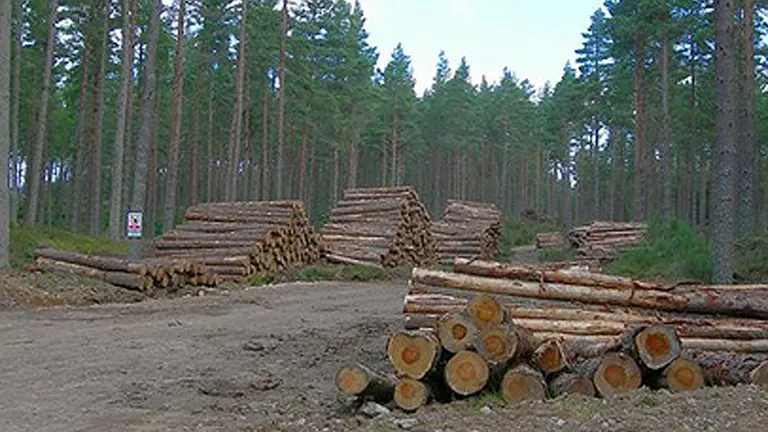
Understanding these issues is critical for stakeholders across the supply chain, from forest managers to manufacturers and retailers. This article will examine the most pressing obstacles in timber production and explore potential solutions.
Table of Contents:
- Transportation Challenges
- Manufacturing and Distribution Challenges
- Economic and Regulatory Challenges
- Environmental and Sustainability Concerns
- Labour and Skill Shortages
- Technological Challenges
Challenges in Timber Harvesting
Timber harvesting is the first step in the timber production process and is often where the most significant challenges occur.
- Declining Forest Cover: One of the primary challenges in timber production is the reduction in forest areas globally. As urbanization expands and agricultural activities encroach on natural forests, the land available for sustainable forestry diminishes. This limits the capacity for timber production and creates pressure on remaining forest resources.
- Climate Change Impacts: Climate change poses a severe threat to forestry. It affects not only the availability of timber but also the growth rates and health of forest ecosystems. Unpredictable weather patterns, droughts, and increased susceptibility to pests and diseases can hinder tree growth, reducing the overall yield of timber.
- Poor Forest Management Practices: In many regions, lack of knowledge or disregard for sustainable forestry practices contributes to deforestation and the degradation of forest ecosystems. Unsustainable logging, over-harvesting, and inadequate reforestation efforts result in poor quality and reduced timber availability.
Transportation Challenges
The transportation of timber from forests to processing plants is fraught with challenges, particularly related to cost and efficiency.
| Transportation Challenge | Details | Cost Factor |
|---|---|---|
| Distance to Sawmills | Long distances between forests and processing plants | Increased fuel and labor |
| Specialized Vehicles | Need for heavy-duty trucks capable of carrying large logs | High maintenance costs |
| Fuel Costs | Rising fuel prices add significant expenses | Variable, often high |
| Environmental Damage (Roads) | Road building for transport causes deforestation | Eco-restoration costs |
| Water Transport Limitations | River log transport disrupts ecosystems | Regulatory fines/repairs |
- High Transportation Costs: Transporting logs, especially from remote forests, can be costly. The distance between forests and sawmills often necessitates expensive logistics solutions. Additionally, fuel costs and the need for specialized vehicles for heavy loads further drive up transportation expenses.
- Environmental Impact: Traditional methods of log transportation, such as floating logs down rivers, while cost-effective, have significant environmental consequences. High-resin logs may sink, and the process can disrupt local ecosystems, harming vegetation and aquatic habitats. Furthermore, the construction of roads to facilitate transportation often leads to deforestation.
Manufacturing and Distribution Challenges
The manufacturing and distribution stages of timber production face their own set of challenges, particularly due to increased global competition and the demand for high-quality products.

| Challenge | Details | Cost Factor |
|---|---|---|
| Intense Competition | Global market competition drives cost-cutting | Lower margins, price wars |
| Sustainability and Innovation | Investing in sustainable practices and technology | High capital investment |
| Certification Demands | Compliance with sustainability certifications (e.g., FSC) | Certification and audit costs |
| Distribution Costs | Transportation and logistics for market delivery | High fuel and labor costs |
- Intense Competition: The rise of tree plantations worldwide has intensified competition within the wood processing sector. Manufacturers are under pressure to maintain high-quality standards while reducing costs. This competition affects not only manufacturers but also distributors and retailers, whose profits depend heavily on the quality and appeal of the wood products they sell.
- Sustainability and Innovation: In response to market pressures, many manufacturers are turning to innovative techniques to improve product quality and reduce environmental impact. However, these innovations often require significant capital investments in new technology and processes, which can be prohibitive for smaller companies.
- Demand for Certification: There is growing demand for timber products that are certified as sustainable, such as those with Forest Stewardship Council (FSC) certification. Meeting these standards requires strict adherence to sustainable forest management practices and traceability throughout the supply chain, which can be complex and costly to implement.
Economic and Regulatory Challenges
Economic factors and government regulations also pose significant challenges for the timber industry.
- Fluctuating Market Prices: The timber market is subject to fluctuations due to supply and demand imbalances, natural disasters, and global trade dynamics. These price fluctuations can make it difficult for producers to plan long-term investments and maintain profitability.
- Regulatory Hurdles: In many countries, timber producers must navigate a complex web of regulations related to forest management, land use, and environmental protection. While these regulations are essential for ensuring sustainability, they can also be cumbersome and costly for businesses to comply with, especially smaller producers with limited resources.
Environmental and Sustainability Concerns
Sustainability has become a key issue in timber production, with consumers and governments alike demanding more environmentally friendly practices.
- Deforestation: The most critical environmental challenge in timber production is deforestation. Unsustainable logging practices, particularly in tropical rainforests, contribute to habitat destruction, loss of biodiversity, and increased carbon emissions.
- Sustainable Forestry Practices: Sustainable forestry aims to balance the need for timber production with the conservation of forest ecosystems. This includes practices such as selective logging, reforestation, and maintaining biodiversity within managed forests. However, implementing these practices on a large scale requires significant investment and coordination across the supply chain.
- Carbon Footprint: The timber industry is increasingly being scrutinized for its carbon footprint. From harvesting to transportation and processing, each stage of the timber production process contributes to greenhouse gas emissions. Companies are under growing pressure to reduce their environmental impact through more efficient processes and renewable energy sources.
Labor and Skill Shortages
The timber industry, like many other sectors, faces challenges related to labour availability and skills development.
| Challenge | Details | Cost Factor |
|---|---|---|
| Aging Workforce | Fewer young people entering the industry | Increased training costs |
| Skill Gaps | Lack of skilled labor in forest management and machinery | Higher recruitment costs |
| Technology Adaptation | Need for workers skilled in new technologies | Specialized training expenses |
| Labor Availability | Regional shortages of qualified workers | Increased wages/benefits |
- Aging Workforce: In many regions, the workforce in the timber industry is aging, with fewer young people entering the profession. This is partly due to perceptions of the industry as being physically demanding and offering limited career opportunities.
- Skill Gaps: As the industry adopts more advanced technologies, there is a growing need for workers with specialized skills, particularly in areas such as forest management, machinery operation, and environmental science. However, there is a shortage of qualified workers to meet this demand.
Technological Challenges
The timber industry is increasingly relying on technology to improve efficiency and sustainability, but this transition comes with its own set of challenges.
- High Cost of Technology Adoption: While advanced technologies such as drones, satellite imaging, and automated machinery can improve productivity and reduce environmental impact, the high cost of adopting these technologies is a barrier for many producers, particularly smaller businesses.
- Data Management: The use of technology in timber production generates vast amounts of data, from forest inventory to transportation logistics. Managing this data effectively is crucial for optimizing operations, but many companies lack the infrastructure or expertise to do so.
Final Conclusion
The timber industry is at a crossroads, facing a multitude of challenges that span environmental, economic, and technological dimensions. Addressing these challenges requires a coordinated effort across the supply chain, from sustainable forest management to innovation in manufacturing and transportation. By embracing sustainability, investing in technology, and developing a skilled workforce, the timber industry can overcome these obstacles and continue to thrive in the 21st century.
Frequently Asked Questions (FAQs)
- What are the key challenges in timber harvesting?
Timber harvesting faces issues such as declining forest cover due to urbanization and agriculture, climate change effects like droughts and pest infestations, and poor forest management practices, which reduce timber yields and compromise sustainability. - How does climate change affect timber production?
Climate change disrupts timber growth by causing unpredictable weather, droughts, and increased forest susceptibility to pests and diseases. This negatively impacts tree growth rates and overall timber supply, leading to production challenges. - Why are transportation costs a major challenge in timber production?
Transporting logs from remote forests to mills is expensive due to the need for specialized heavy-duty vehicles and the long distances involved. Additionally, fuel costs and environmental impacts from traditional methods like river transport add to these challenges. - What are the environmental consequences of traditional log transportation methods?
Transporting logs via rivers can disturb local ecosystems, harm aquatic life, and lead to the sinking of high-resin logs. Road construction for timber transport also causes deforestation and environmental degradation. - How does competition affect timber manufacturers?
Increased global competition, driven by the rise of tree plantations, forces manufacturers to innovate and improve efficiency. Companies must balance cost reductions with maintaining high timber quality, which adds pressure on profitability. - What role does sustainability play in modern timber production?
Sustainability is critical as consumers demand certified products. Sustainable forestry practices like selective logging, reforestation, and biodiversity preservation are essential but require investment in technology and adherence to regulations. - How do fluctuating timber market prices impact the industry?
Price volatility in timber markets, influenced by supply-demand imbalances, natural disasters, and trade dynamics, makes long-term planning difficult for producers. This can affect investments in technology and sustainable practices. - What regulatory challenges do timber producers face?
Producers must comply with complex regulations on forest management, environmental protection, and land use. While these regulations aim to ensure sustainability, they can be costly and burdensome, particularly for smaller companies. - What are the labor challenges in timber production?
The timber industry faces labor shortages due to an aging workforce and a lack of interest from younger generations. Additionally, there’s a growing need for workers with specialized skills in areas like forest management and machinery operation. - How does technology impact timber production, and what are the challenges?
Advanced technologies like drones and automated machinery improve productivity, but their high adoption costs can be prohibitive for smaller producers. Managing the data generated by these technologies is also a significant challenge for many companies.
We hope this guide has shed light on the various challenges faced in timber production, from environmental impacts to economic pressures. Have experiences in the timber industry or ideas on how to overcome these obstacles? Share your insights and join the conversation below. Your thoughts can help foster innovation and sustainability in timber production. Feel free to pass this guide along to others who are passionate about sustainable forestry and the future of the timber industry! Together, we can work toward more efficient and eco-friendly timber practices.

James Wilson
Forestry AuthorJames Wilson has over 15 years of experience in forestry economics, specializing in sustainable practices, investment opportunities, and financial management. He has contributed to notable publications like "Forestry Today" and "EcoFinance Journal" and is known for providing practical and insightful advice. With a degree in Environmental Economics, James stays updated through continuous learning and active participation in industry discussions. Outside work, he enjoys hiking and nature photography, bringing a well-rounded perspective to his professional role.




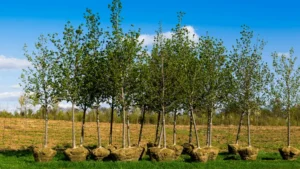
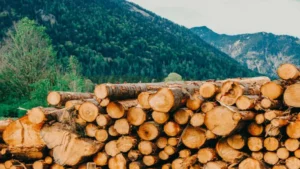
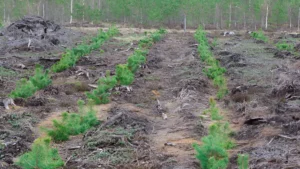



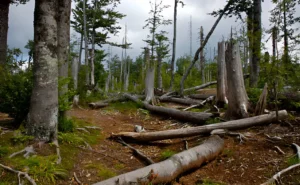
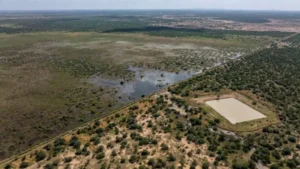

Leave your comment